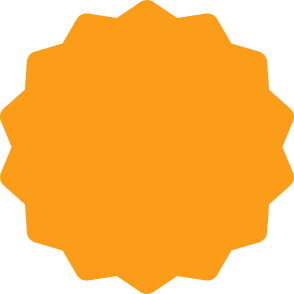What Is Scuba Fabric?
Scuba fabric is a double-knit synthetic textile made primarily from polyester and spandex. Known for its smooth surface, slight sheen, and spongy texture, it resembles neoprene in appearance but is lighter and more flexible.
Scuba knit is tightly woven, giving it excellent stretch, durability, and a structured drape. Its name comes from its visual similarity to wetsuit material, but it is not the same as true neoprene used in scuba diving gear.
How Is Scuba Fabric Made?
The Knitting Process
Scuba fabric begins with a double-knit construction, which means two sets of needles interlock yarns to create a dense, structured textile.
This gives scuba its signature firmness and smooth texture on both sides. The double-knit also helps prevent fraying, making the fabric easy to cut and sew.
Synthetic Fiber Composition
Most scuba fabric is made from synthetic fibers like polyester, which are known for durability and resistance to shrinking.
The addition of spandex or Lycra enhances elasticity, allowing the fabric to stretch in multiple directions and return to its original shape. This blend offers both flexibility and support, making it suitable for body-hugging garments.
Finishing Treatments
After knitting, the fabric may go through various finishing processes such as dyeing, brushing, or heat-setting.
These steps help improve the fabric's colorfastness, texture, and performance characteristics like moisture-wicking or UV protection, depending on its intended use.
What Different Types of Scuba Fabric Are There?
- Standard Scuba Knit: Thick, smooth, and with moderate stretch—ideal for structured fashion pieces like skirts and dresses.
- Scuba Crepe: Features a textured surface with slightly less structure; combines the drape of crepe with the stability of scuba.
- Scuba Suede: Has a suede-like brushed finish on one side, offering a luxurious look and soft feel.
- Techno Scuba: A lightweight version with more flexibility—frequently used in activewear and athleisure.
- Printed Scuba: Comes with digital or sublimation prints; retains vibrancy well due to the polyester base.
How Is Scuba Fabric Used?
Fashion and Apparel
Scuba knit is a favorite in fashion design for creating form-fitting dresses, skirts, and blazers. Its structure provides a clean, modern silhouette while offering comfort and flexibility. The fabric holds pleats and shapes well, making it ideal for sculptural garments and minimalist styles.
Costumes and Performance Wear
Thanks to its stretch and durability, scuba fabric is often used in dancewear, costumes, and performance clothing. It allows for freedom of movement while maintaining shape under stress, which is especially useful for theatrical or athletic applications.
Accessories and DIY Projects
Scuba is also a popular choice for bags, laptop sleeves, and structured accessories, as its thickness provides light padding. Crafters appreciate its no-fray edges and ease of cutting and sewing, making it suitable for home projects and creative prototypes.
FAQs
How much does scuba fabric cost?
Scuba fabric typically ranges from $8 to $20 per yard, depending on quality, weight, and supplier. Designer versions or specialty blends may cost more, especially when used for fashion or performance wear.
How does scuba fabric impact the environment?
Scuba knit is made from synthetic fibers like polyester and spandex, which are not biodegradable. Its production involves energy-intensive processes, so while durable, it's not considered an eco-friendly textile.
What is the difference between neoprene and scuba knit?
Neoprene contains a spongy rubber core and is thicker, heavier, and more insulating. Scuba knit mimics its look and structure but is lighter, softer, and more suitable for garments and daily wear.
What is the difference between scuba knit and ponte?
Scuba knit is smoother, stretchier, and more structured, often with a slick surface. Ponte is firmer and more matte, with less stretch, making it better for tailored, stable garments like trousers or blazers.


























